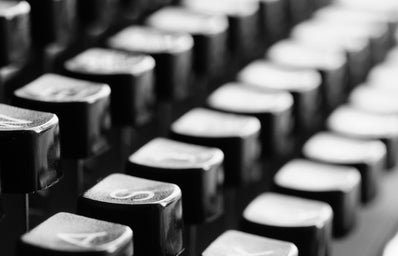Getting work done can be a struggle. Sometimes you feel like you have studied for hours and have not retained a thing; sometimes you sit down for a great working session, and two hours later, wonder how you have ended up in the depths of your favourite social media site, with no work to show for it; and sometimes you cannot muster up the motivation to even try. If you have any of these problems, or even if you don’t, check out the following tools! They could just change your productivity game for the better.
1. OneNote
Using OneNote has not only boosted my productivity, but I think it has actually changed my life. I have always liked having a notebook, because I would jot down everything and anything that I wanted to remember or go back to. As nice as it was to physically write things down and add scribbles or whatever else I wanted, I found a few limitations with physical notebooks.
I could not carry them absolutely everywhere, which rendered them useless if I needed to access information and did not have my notebook with me. My notebooks quickly got very disorganized, as I would sometimes write down random notes on different pages in no particular order; and if I tried to make sections, I would run out of space in certain sections faster than others, and so on. I am sure people have found genius ways around these issues, and I have seen some beautiful bullet journals and other systems that seem to work well for people. However, for me, OneNote is a great solution.
If you have not used it, OneNote is literally an electronic notebook, which, to me, is better than a physical one because it has unlimited space and can be reorganized at any time. To me, it’s also better than Word for jotting down notes, because you can quickly flip between different pages without having to open separate documents. You can make multiple notebooks, within which are sections and pages. Each page automatically marks itself with the date and time you created it. You can type anywhere on it, create equations, lists and tables, attach files, draw, mark and highlight with different symbols, and even insert excel documents and PDF printouts. All this is great for annotating slides and documents, although handwriting class notes is better for memory, so consider that. You can also search pages or your entire collection of notebooks for key words.
OneNote automatically saves all your work, and can be accessed and edited from other devices, such as someone else’s computer or your smartphone. The program arguably works even better if you have a laptop with a touch screen, or a tablet/laptop hybrid. I definitely sound like a Microsoft ambassador at this point, so I will rest my case, but honestly give the program a try if you have not already.
2. Wunderlist / Todoist
A to-do list application is a great way to keep track of everything you need to do. The first step of David Allen’s Getting Things Done Methodology is to “capture” everything. That means writing down all your ideas, thoughts and to-do’s. This will clear up valuable space in your brain and reduce wasted energy, so that you can focus on the task at hand and thereby be more productive!
I use Wunderlist, as well as OneNote, to be able to capture everything. If it’s a random thought or idea, I write it in OneNote. In Wunderlist, I have lists for everything I need: general tasks, homework, current assignments and assessments that are in a syllabus but that I can’t work on yet. I also have grocery lists and other items I need to buy, books I want to read, movies I want to watch, restaurants I want to try, and items that I either want to bring to Toronto (where I’m from) next time I am there, or that I want to bring back to school from Toronto.
The tool is very flexible and, obviously, customizable. It allows you to easily set due dates for tasks, and to “star” items that are particularly important. You can then view all your lists separately, or by due date. I happen to use and enjoy Wunderlist, but Todoist is popular as well.
3. Google Calendar
Google Calendar is an oldie but a goodie. E-mail accounts, phones and laptops have come and gone, but my Gmail has remained constant for a long time, and I imagine it will for a lot longer. That is part of the reason that I like using Google to keep my calendar. It is accessible from the web, has an offline mode, and can be synced to pretty much any preferred calendar application on any phone or computer. I have been told that Outlook is also a great application for mail and calendar; I just recommend using an e-mail account and program that you do not think you will get rid of.
Some tips that could help you take full advantage of your calendar:
-
If you are a planner, try creating a calendar (perhaps in a muted colour) that you can use to plan out rough blocks of time for different activities. This way, you can visualize your daily agendas, and hide the calendar to see where you actually need to be at certain times.
-
You can create a calendar with professors’ office hours as recurring events. I have a calendar like this and keep it invisible most of the time, but if I want to go see a prof, I can quickly match up their office hours with my free time, and see where their office is.
-
Sync your electronic to-do list to your calendar! For me, I found the “calendar feed” link in the account settings of Wunderlist, and uploaded this as a calendar in my Google Calendar. My tasks that have due dates automatically update to show on my calendar, so I can visually see how my schedule lines up with due dates.
4. Tomato Timer
The Tomato Timer website is a simple tool that helps to practice the Pomodoro technique. This technique involves working in “pomodoros,” which are blocks of 25 minutes of working followed by a five-minute break. The technique recommends that you complete four pomodoros, then take a longer break of 15-30 minutes, before starting over. These are the traditional time intervals. I recommend trying them out, then playing around with them, if you find that you can focus better for a slightly shorter or longer period of time. Of course, you can use any old timer to take advantage of this technique!
5. Coffitivity
If you don’t like working in complete silence, and white noise and classical music are not your thing, try out this website! It is perfect for me because I love working in cafés but cannot always physically be in one. You can choose from recordings of different café settings, and work to the ambient sounds of incomprehensible chatter and gentle movement. For many, this seems to work better for certain types of work, especially creative tasks, but I find it useful for pretty much all types of studying.
6. StayFocusd / Cold Turkey
If you cannot resist the temptation of distracting websites, or get off-track too easily and too often, you may want to try an application like StayFocusd or Cold Turkey. StayFocusd is a Google Chrome extension that blocks websites that you list for a specified period of time. You can also set a certain amount of time per day that you are allowed on the blacklisted websites, after which the extension will block you from them. Cold Turkey is a “more intense” version of this, as it is an actual software that you download onto your computer. This makes it much harder to divert.
7. Anki / Quizlet
Although making them does not yield the benefits of handwriting, electronic flashcards are good because they are usually faster to create than physical ones, and can be accessed from any laptop or phone. I have used Quizlet for a while, and it is pretty good, but I may switch to Anki, another popular application. The reason Anki is supposed to be superior is that it utilizes spaced repetition. In a nutshell, it uses an algorithm to show you flashcards that you struggle with more often, and ones that you get easily less often. It aims to test your knowledge of any given fact right when you are about to forget it, which is an extremely efficient way to memorize things. Give it a try, and look more into the technique of spaced repetition, if you are interested.
8. Written? Kitten!
This one is a fun and simple tool to motivate you to write. Basically, you choose a type of cute animal and word count. Say you choose “puppies” and “100 words.” Every 100 words that you write, you are shown a different picture of a puppy.
How great is that?
9. Habitica
This last tool is one that can help you develop healthy habits by basically game-ifying your life. You can use it to help you keep track of tasks, as well as to reach consistent goals (anything from reading, to working out, to flossing), for which it rewards you with virtual items, just like a video game. I just discovered this tool, and honestly do not know if it is for me; however, it seems to be useful (and even life-changing) for a lot of people, so I would definitely give it a go if it sounds appealing to you! It could motivate you to not only complete work tasks, but to develop habits that could help you reach long-term goals that you’ve previously not been able to prioritize.
Obviously, productivity and motivation ultimately have to be driven by you, but taking advantage of the tools at your disposal could make all the difference. I hope something here can make a difference for you!


